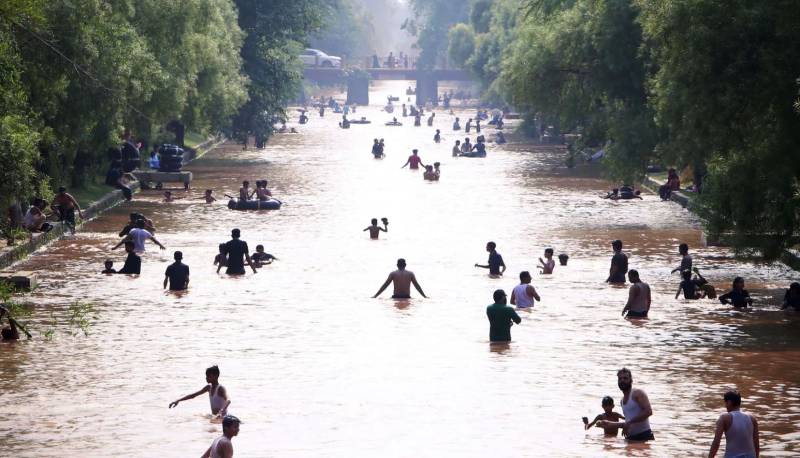Lethal heatwave continues to haunt as heatstroke claims a life in Larkana
A youth lost his life due to heatstroke in Larkana city.

Stay tuned with 24 News HD Android App

The relentless and lethal heatwave has now entered into its third week posing serious climate challenges to country as weather office forecasted, day temperatures are likely to remain 07-09°C above normal in Punjab, Islamabad, Khyber Pakhtunkhwa, Gilgit-Baltistan and Kashmir asking public to take precautionary measures to avoid heatwave, reported 24NewsHD TV channel.
A youth named Muhammad Sharif of Achir Sidhaio area in Larkana city lost his life due to heatstroke. He fell unconscious and later breathed his last. He was shifted to the hospital but he was pronounced dead by the doctors
The met office further said that 06-08°C above normal in Sindh and Balochistan and it has been informed that more heat is in store for the coming days.
The weather remained hot and dry in most parts of the country, while very hot in plain areas. However, rain occurred in Dir. Rainfall (mm): Khyber Pakhtunkhwa: Dir (upper & lower) 01.
Jacobabad saw a maximum extreme temperature of 48 °C as the city is already one of the hottest cities in the world. Pertinent to note that for Pakistan, it was the hottest April in 61 years.
Sibbi, Khairpur, Dadu witnessed 47°C while Mohenjodaro, Rohri, Larkana, Mithi and Rahim Yar Khan observed 46°C.
Even birds are getting heatstroke and bird and nature lovers advised people to hold water in some pots and place them on their rooftop so birds can also get water in the scoring heat.
It may be mentioned here that Pakistan in an agriculture based economy where the bulk of labor is outdoors.
The heat wave is also affecting wheat harvest season where millions of farmers are choosing an odd path working during dangerous weather would that would cause their health otherwise they have to forgo their livelihoods.
While, the urban areas are suffering from the extreme heat more likely than the rural areas because cities heat up faster than their other areas as asphalt, concrete, glass, and steel absorb sunlight and also the rural areas have more green areas surrounding then cities.
Reporter Abdul Khaliq Mugheri
